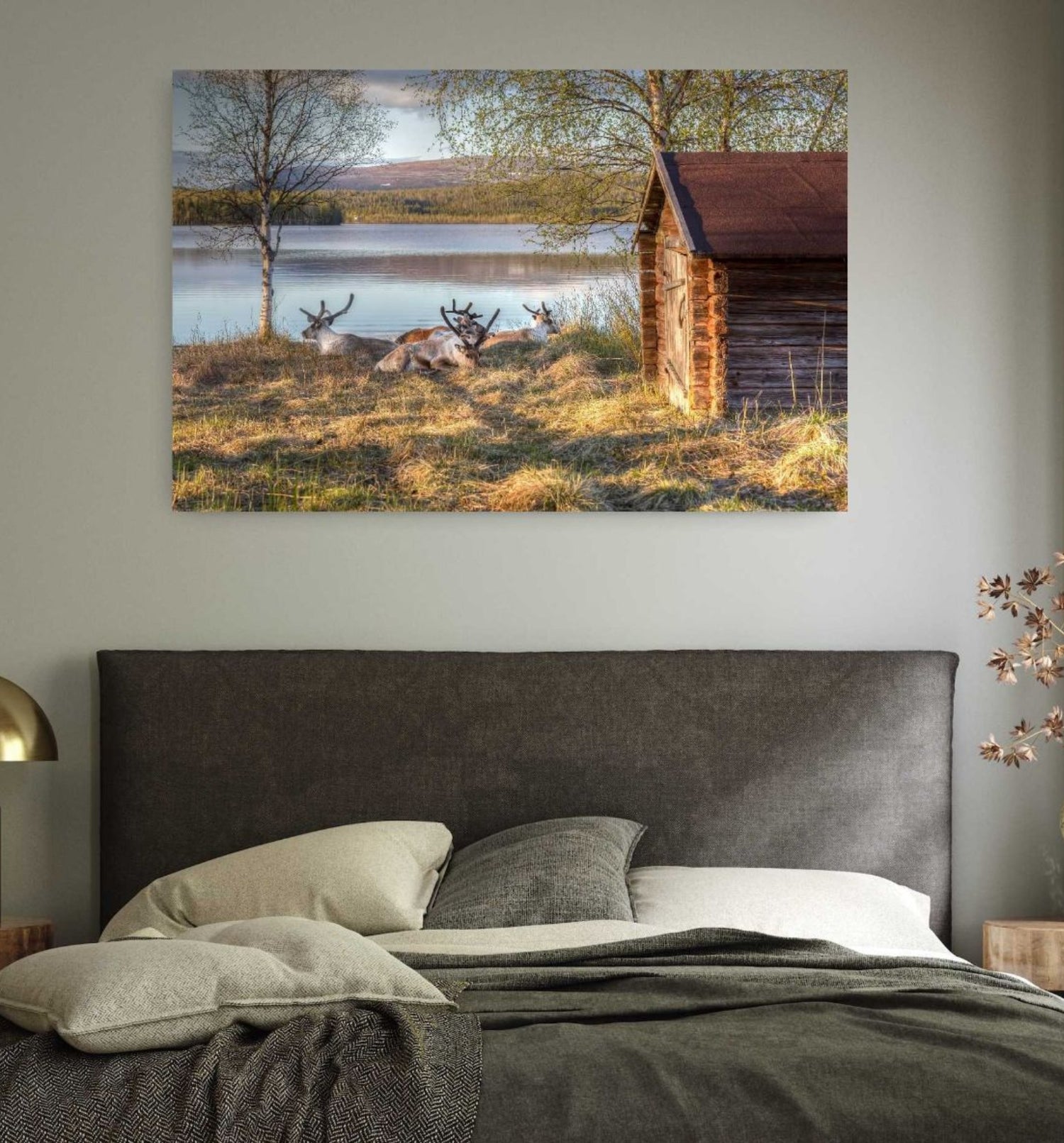
From the reindeer fence of Nilivaara towards the fell
Share
The summer reindeer fence grew strongly with nettles. The reindeer that had eaten in the winter had trampled and fertilized the soil and apparently the nettle thrived in that environment. No reindeer could be seen at this time, they had dispersed into the forests and were probably feeding themselves with mushrooms at this time. The inside of the reindeer fence had its own characteristic smell, which you couldn't tell if it was good or unpleasant, something in between.
The winter feeding area continued outside the fence, and as a sign of that, hay had grown around the perennials. Finally, the terrain became more forested and I hit a route that led towards Tahkokuru. Around the route, in the hedges, this year's blueberry crop could be seen partly already fully ripe, and as I walked, I occasionally popped berries into my mouth.
The old forest of the national park is always as enchanting and calming. Somehow you can sense the spirit and memories of the ancestors in this environment. Reindeer have been hunted, berry picked, grazed here and needed trees have been collected here.
The area around Kesang has been a good pine forest, and before I came to the national park, I myself have crept up to the bark of a vertical ear in a foggy morning. The dog barked at the wild boar, and the wild boar gave the dog a sledgehammer. Sometimes the fall was successful, sometimes the bird detected the hunter's movement and took to its wings.
Today I am satisfied that the area has been calmed down and at most I can aim with the camera lens. One spring it happened that during a ski trip I noticed forest tracks in these same places. I circled around following the tracks and hissed with my mouth. Suddenly, from behind the fir tree came a thunderbolt, tail wagging and in full strumming frenzy. The wing swooped low, left a trail in the snow, and a hoarse cry was heard from the bird's throat.
My black anorak caused the forest to conclude that I was a competitor and it rushed towards me with the intention of chasing away some gigolo in its path. I was resting on my knees on my skis and I was able to take several pictures of the owner of the forest in a party dress. When I stood up, the bird seemed embarrassed, tucked its wings and tail and went under the fir tree to think about its mistake.
That picture is a plaque on my wall; the rays of the evening sun emphasize the versatile coloring of the soidin forest, black, a little brown, the green of the forest in the neck area and the bright red corners of the eyes.
Now there were no forests to be seen and I started to climb the route that became more and more stony. In the end, I was out in the open and only greenish fell stones hit my feet.
The laziness of the initial distance disappeared and I climbed above the lower saddle between the peaks of Kesang. Sometimes I turned to the direction I came from and photographed the dried coils growing on the heather and the most strangely bent fell birches.
In one tree, too, the stem started downwards from above the base, but then the birch had decided to reach up from the horizontal plane, grew in that direction for a while, but then nevertheless began to hesitate again at such a height and bent its top towards the ground again.
The trees of the tuntur are humble, but tenacious. Blueberries grow on the heather branches between the stones, which at their best are like their own species. Black, richly flavored, slowly ripening berries.
Blueberries do not grow in all summers. Too much dryness or too much humidity weakens ripening, but in some summers the heather patches on the hillside give a rich harvest until late autumn.
I got to the height that the Lalvavuoma behind the fell and the criss-crossing forest canopies began to be visible. There were the old hay meadows of the äkäslompolo people. This way, during the summer, the streams were difficult to navigate and the area was left to its own peace. Totovaara had remained behind the clouds and soon the rest of the landscape disappeared into the mist.
It started to rain and I was in a hurry to put the camera in my backpack. I stopped admiring the scenery and started down the slope, being careful of slippery stones. The water came all the way to the ground and as I walked I noticed how the fell stones washed themselves. The moss that had formed on the rocks over the millennia began to shine bright green.

